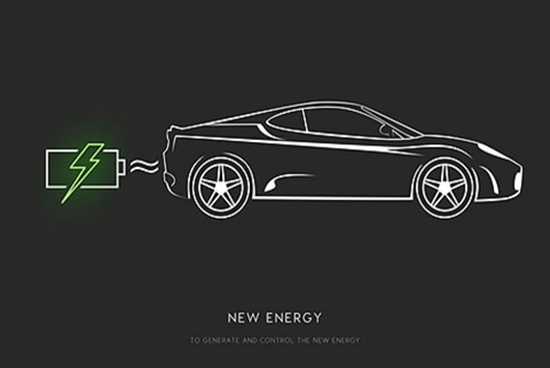Welcome to Fujian Weidong New Energy Co., Ltd
Tel:+86 597 5680903/+86 18059788355 E-mail: sales@chinahev.cn


Solid state battery vs fuel cell, who will rule the next decade of new energy vehicles?
- Categories:Industry News
- Author:
- Origin:
- Time of issue:2020-04-03 14:18
- Views:
Solid state battery vs fuel cell, who will rule the next decade of new energy vehicles?
(Summary description) A piece of news that "charges for 1 minute and has a range of 800 kilometers" has drawn our attention to solid-state batteries...
- Categories:Industry News
- Author:
- Origin:
- Time of issue:2020-04-03 14:18
- Views:

A piece of news that "charges for 1 minute and has a range of 800 kilometers" has drawn our attention to solid-state batteries. It seems that solid-state batteries have suddenly become a magic weapon for leaps in electric vehicles. Although if you take a closer look, it is not difficult to find that the information disclosed by Fisker still has many questionable points, but at least it shows that solid-state batteries are becoming a new direction for battery development.
On the other hand, fuel cell vehicles, which have been said for many years, have become the focus of attention in recent years as Japanese and Korean car companies have successively put into production. Who is the future direction of new energy vehicles for solid batteries and fuel cells? What difficulties will each face?
"Flexible, superior energy density solid state battery", this patent from American electric car manufacturer Fisk claims to increase the endurance of electric cars to 804 kilometers and shorten the charging time to 1 minute. The patent describes a solid-state battery.
We might as well use the physics knowledge of junior high school to make a simple calculation. According to the current excellent 10kWh / 100km energy consumption level of electric vehicles, 804km requires 80.4kWh of energy. If it is fully charged in one minute, the charging power will reach nearly 5000kW.
What is 5000kW? Almost the power of a medium-sized power station. Therefore, this Fisker patent is only for laboratory data on a single solid-state battery. In reality, considering the integration of the battery pack and the endurance of the power grid, the so-called "recharge for 1 minute and a range of 800 kilometers" can only be a publicity stunt.
However, solid-state batteries are indeed an important direction for energy density breakthroughs in current automotive batteries. Fuel cell vehicles, another development direction, are also in full swing in recent years. I do n’t see him. When Tesla and Toyota are taunting each other's technical route, it means that there must be a lot to tell here.
Solid-state batteries: a breakthrough that can enable large-scale commercialization of pure electric vehicles
Every significant improvement in battery performance is essentially a major change in the battery material system. Because each type of battery material system has its upper limit of energy density.
From the first generation of nickel-metal hydride batteries and lithium manganate batteries, the second generation of lithium iron phosphate batteries, to the third generation of ternary batteries that are widely used today and are expected to last until about 2020, the energy density and cost of Obvious trend of step up and down. Therefore, what kind of battery system the next-generation power battery chooses is very important to achieve the battery target around 2025.
The current lithium iron phosphate battery has an energy density of approximately 120-140Wh / kg. The energy density of a large-scale ternary battery can reach 130-220Wh / kg, and the ternary battery in the laboratory can reach 300Wh / kg. .
However, due to the influence of the existing system architecture and key positive electrode materials, the energy density of the lithium ion battery in the existing system is basically difficult to exceed 300Wh / kg, and it is difficult to meet the needs of future power batteries. In order to reach the energy density of 400Wh / kg for single cells in 2025 and 500Wh / kg in 2030, the development and industrialization of emerging battery technologies is imminent, which means that the mileage of electric vehicles will double compared with now.
At present, the main problem of commercial lithium-ion batteries is the use of liquid / gel-like electrolytes, which have limited electrochemical windows, and are difficult to be compatible with lithium metal negative electrodes and newly developed high-potential positive electrode materials, which has a bottleneck in increasing energy density. At the safety level, such a structure will also cause problems such as short-circuit ignition, increase in ion concentration, battery internal resistance, and continuous consumption of electrode materials.
The solid-state battery enters the field of vision because of its high ionic conductivity and mechanical strength, wide electrochemical stability window, and operating temperature range, which can achieve high energy density, high power density, and high safety.
The solid electrolyte has a wider electrochemical window than the organic electrolyte, which is beneficial to further widen the voltage range of the battery, and because there is no concentration polarization, it can work in high current conditions, thereby improving the energy density of the battery. At the same time, the solid electrolyte is non-flammable, non-corrosive, non-volatile, does not have the problem of leakage, does not need a separator to separate the positive and negative electrodes, and prevents the growth of lithium dendrites, which fundamentally avoids the short-circuit phenomenon of the battery and can apply more negative electrode materials .
In addition, when integrated into electric vehicles, solid-state batteries also have the characteristics of compact structure, adjustable scale, and large design flexibility, which are conducive to vehicle integration.
In this way, is the solid-state battery perfect? This is far from the truth. At present, solid electrolyte materials with potential can be divided into polymers, sulfides, and oxides. However, the chemical properties of different materials and different arrangements are very different. Some have fast charging speeds, some have high energy density, and each has its own advantages. Each has its own shortcomings, and it is difficult to solve all problems with one material.
At the same time, the fact that the chemical properties are not stable enough and the manufacturing process is not perfect also makes solid-state batteries still have a long way to go.
The realization of the industrialization of solid-state batteries fundamentally depends on breakthroughs in material technology. At present, patents on solid-state batteries far exceed the synthesis of other types of batteries. The industrial application of high-energy-density all-solid-state batteries is expected to take 5-10 years. Some advanced companies will produce solid-state batteries in small batches in 2020, while mass production in large areas is expected to be around 2025.
Fuel cells: how to achieve a profitable business model is the key to popularity
Theoretically, hydrogen has a much higher energy density than electricity and oil. Of course, this refers to using hydrogen to generate electricity rather than directly burning hydrogen. Moreover, it only takes a few minutes for a single hydrogenation, and the driving range reaches 500-700km. During the use, only water is discharged without any other exhaust gas, which is completely zero emissions.
However, it seems that there are three key issues that need to be solved for fuel cell vehicles to be truly commercialized on a large scale: fuel cell life, fuel cell cost,
At present, if it does not rely on government subsidies, fuel cell vehicles are still in a "high price" state. In addition to general R & D investment, the amount of precious metal platinum in the catalyst is an important factor. Even with the current technological progress, the amount of platinum used still reaches 0.3-0.5g / kW. Therefore, a 100kW fuel cell system requires about 30-50g of platinum. With reference to the price of platinum jewelry on the market, you can probably have a concept of this cost.
On the other hand, domestic R & D and production of some key components such as bipolar plates, air compressors, and DC boost components in fuel cell systems are largely dependent on imports, which are also domestic fuel cell vehicles. Reasons for the high cost.
This is the cost of the car, and the cost of hydrogen fuel is also a big problem. There are two main methods of hydrogen production: electrolysis of water to produce hydrogen and industrial by-product hydrogen production. The cost of the former can be more than three times that of the latter. However, because fuel cells have extremely high requirements for hydrogen purity (99.9%), during the demonstration run of small batches, the country still mainly uses electrolytic hydrogen.
During the Shanghai World Expo, the cost of hydrogenation of fuel cell vehicles was 70 yuan / kg, and the fuel cost per unit of mileage at this price was even higher than that of traditional fuel vehicles.
If renewable sources of hydrogen such as by-product hydrogen can be used, the price of hydrogen per kilogram will be around 20-30 yuan. For cars, it can run more than one hundred kilometers per kilogram of hydrogen. Consumption of about 8 liters of oil, according to the current oil price of about 50-60 yuan.
At this time, the cost of using a fuel cell vehicle is only about half that of a conventional fuel vehicle. Of course, the separation, purification, and distribution mechanism of industrial by-product hydrogen require in-depth research and continuous improvement.
In addition, hydrogen storage is also a key factor in the popularity of fuel cell vehicles. In order to obtain higher energy density, hydrogen is often cooled to below -253 ° C and becomes liquid storage. This not only requires high thermal insulation performance of the hydrogen storage container, but also liquefied hydrogen consumes a lot of energy, accounting for about 1/3 of hydrogen energy, which will greatly reduce the overall utilization efficiency of vehicle hydrogen energy.
During the hydrogen filling process, additional cooling measures must be taken to control the temperature rise of the gas cylinder, which is generally as low as -40 ° C. It is conceivable how much additional energy is needed to achieve temperature control during this filling process.
No matter which hydrogen production method, storage method, or transportation method, the hydrogen energy ecosystem needs to be re-established, involving a large amount of infrastructure investment and construction.
At present, there are only 6 hydrogen refueling stations in operation in China. According to the national "13th Five-Year Plan", China will build 100 hydrogen refueling stations by 2020, but this is only the current level of Germany and Japan. Moreover, the construction cost of a hydrogen refueling station exceeds 10 million yuan, reaching nearly 10 times the charging station, and the complexity of the intermediate links makes the construction and cycle of the hydrogen refueling station much more difficult than the charging station.
Solid-state battery or fuel cell: who can solve the battery material system and hydrogen ecology first?
Who can represent the future of new energy vehicles? At least for now, there is no clear answer. On the one hand, the battery material system urgently needs to be upgraded in exchange for higher energy density; on the other hand, the hydrogen energy ecosystem is urgently needed to be established so that fuel cell vehicles can get on the right track of the business model.
Obviously, the two problems that restrict their respective developments cannot be solved in a short time. This is why there are powerful members in both camps insisting on their technical line.
From the perspective of infrastructure construction, the construction of charging infrastructure in China, especially in first- and second-tier cities, has begun to take shape, and most electric vehicle users are no longer worried about being unable to charge. In contrast, the construction of hydrogen refueling stations is still a huge challenge due to technical and cost constraints.
However, it is undeniable that the huge potential of fuel cell vehicles has not been exploited. The current problems in various industrial chains cannot obliterate the superiority of the hydrogen energy ecosystem. This is why the industry generally considers fuel cell vehicles as "communism" .
But from the current point of view, whether it is technical maturity, consumer acceptance, promotion feasibility, or policy guidance, pure electric vehicles with higher driving mileage will become the common choice of car companies in the next 5-10 years.
——From Net Tong Jiren Automobile Review
Copyright © Fujian Weidong New Energy Co., Ltd




